As expected, the majority of the NBA teams made their roster cuts on Saturday and didn’t wait until Monday’s deadline to set their regular season rosters.
Making those moves on Saturday will ensure the players on non-guaranteed contracts clear waivers on Monday, before the regular season begins. If a team had waited until Monday to waive a player on a non-guaranteed deal, he wouldn’t clear waivers until Wednesday, and the team would be on the hook for two days’ worth of his salary.
After yesterday’s flurry of roster moves, here’s where things stand around the NBA…
Teams whose rosters are within the regular season limits
Of the NBA’s 30 teams, 26 have rosters that comply with the league’s regular season roster limits, which state that clubs can’t carry more than 15 players on standard contracts or two on two-way contracts.
The following 16 teams are right at the limit, carrying 15 players on standard contracts and a pair on two-ways:
- Boston Celtics
- Brooklyn Nets
- Chicago Bulls
- Denver Nuggets
- Indiana Pacers
- Los Angeles Lakers
- Memphis Grizzlies
- Milwaukee Bucks
- Minnesota Timberwolves
- New York Knicks
- Orlando Magic
- Philadelphia 76ers
- Sacramento Kings
- Toronto Raptors
- Utah Jazz
- Washington Wizards
Just because these rosters look ready for the regular season doesn’t mean they’re fully locked in. In fact, it would be a surprise if at least one or two of these teams don’t make minor tweaks before Monday’s regular season roster deadline. That could be as simple as swapping out one two-way player for another.
The Sixers are one team to watch, since Michael Foster Jr. – who is on an Exhibit 10 contract – remains on the roster. It’s possible Philadelphia intends to convert him to a two-way deal on Sunday or Monday, which would mean the club would have to waive one of its current two-way players (Charlie Brown Jr. or Julian Champagnie).
The following seven teams are carrying 14 players on standard contracts and two on two-ways:
- Atlanta Hawks
- Charlotte Hornets
- Dallas Mavericks
- Golden State Warriors
- Los Angeles Clippers
- Miami Heat
- Phoenix Suns
The majority of these teams have luxury tax concerns and will open the season with an open roster spot to keep their projected tax bill in check, though that’s not the case for all of them.
The Hornets are well clear of the tax, for instance, and could comfortably make a roster addition if they want to. They may also be leaving a spot open for Miles Bridges, though his NBA future is up in the air due to his legal situation.The Mavericks, meanwhile, are in the tax but are still expected to sign veteran guard Facundo Campazzo before the regular season begins.
We’ve covered 23 teams so far. That leaves three more who are in within the regular season limits. Those teams are as follows:
- Cleveland Cavaliers: 14 players on standard contracts and one on a two-way deal.
- New Orleans Pelicans: 15 players on standard contracts and one on a two-way deal.
- Portland Trail Blazers: 14 players on standard contracts and one on a two-way deal.
The Trail Blazers are right up against the tax line and will likely keep their 15th spot open to start the season, but the Cavaliers could add a 15th man if they so choose. All three teams could be keeping an eye on players who were waived in recent days as they mull how to fill their open two-way slots.
It’s worth mentioning that the Pelicans still haven’t signed second-round pick E.J. Liddell, who suffered a torn ACL during Summer League play. I suspect New Orleans wants Liddell to sign a G League contract and rehab with the Birmingham Squadron this season so that the team can use its second two-way slot on someone who can actually contribute on the court, but it remains possible that Liddell could fill that two-way opening.
Teams that still have moves to make before Monday’s deadline
The following teams haven’t yet made their necessary cuts to get within the regular season roster limits:
Detroit Pistons: 16 players on standard contracts and two on two-way deals.
The final cut will be pretty simple for the Pistons. They still haven’t officially waived Kemba Walker, but they’re expected to do so before the start of the season. Because Walker’s salary is fully guaranteed, Detroit can afford to wait until Monday instead of waiving him on Saturday, since there will be no additional financial penalty.
Houston Rockets: 17 players on standard contracts and one on a two-way deal.
The Rockets‘ final moves also looks pretty straightforward. Derrick Favors, who has a guaranteed salary, and Darius Days, who is on an Exhibit 10 contract, remain on the team’s roster for now. Favors will reportedly be waived on or before Monday. The deadline to convert players from Exhibit 10 deals to two-way contracts is Monday, so if Houston converts Days to a two-way today or tomorrow, the club will be set for the season.
Oklahoma City Thunder: 17 players on standard contracts and two on two-way deals.
The Thunder will actually have to waive three players, not just two, because they’re also reportedly signing Isaiah Joe to their 15-man roster. David Nwaba is reportedly one of the players being cut, and it wouldn’t be a surprise if the other two are also players the Thunder acquired from Houston last month: Trey Burke and Marquese Chriss.
San Antonio Spurs: 16 players on standard contracts and two on two-way deals.
The Spurs will have to waive one player to get to the 15-man limit. Keita Bates-Diop and Tre Jones don’t have fully guaranteed salaries, but the fact that San Antonio didn’t finalize its cuts on Saturday suggests that a player with a guaranteed contract will be the odd man out. Tom Orsborn of The San Antonio Express-News reported on Saturday that Joe Wieskamp and Romeo Langford are “on the bubble.”
Reported Exhibit 10 signings that never materialized
There are a handful of free agent contract agreements that were reported at some point during the offseason and, as far as we can tell, never actually materialized. Those agreements are as follows:
- Indiana Pacers: Fanbo Zeng (story)
- Memphis Grizzlies: Keve Aluma (story)
- New York Knicks: Jean Montero (story)
- Utah Jazz: Kofi Cockburn (story)
These players and teams could still technically finalize these deals on Sunday or Monday, but it’s also very possible they simply fell through for one reason or another. For instance, reporting in September indicated that Montero’s buyout from his Spanish team might be an issue.
We’re no longer assuming that these signings going to happen.
Hoops Rumors’ roster resources
We consistently maintain and update a number of lists and trackers that are designed to help you keep tabs on NBA rosters. They’re all up to date following Saturday’s cuts. Those resources, which can be found on the right-hand sidebar of our desktop site or on the “Features” page within our mobile menu, include the following:
- 2022/23 NBA Roster Counts
- 2022/23 Non-Guaranteed Contracts By Team
- 2022/23 Two-Way Contract Tracker
- 2022 NBA Free Agent Tracker: This tracker will no longer be updated once the regular season begins, but includes every offseason free agent signing, including all the players who were signed-and-waived in recent days.
- 2023 NBA Free Agents By Position/Type
- 2023 NBA Free Agents By Team
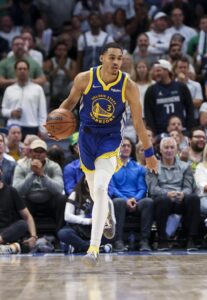 Every player in this group has shown enough to warrant a multiyear commitment and an eight-figure annual salary.
Every player in this group has shown enough to warrant a multiyear commitment and an eight-figure annual salary. Haslem’s teammate
Haslem’s teammate 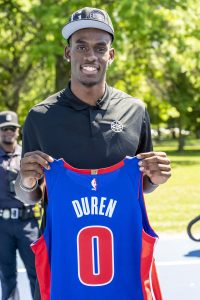 The only team with multiple players on the list of the NBA’s 10 youngest players is San Antonio — the Spurs actually have three players on the list and just missed a fourth, as rookie
The only team with multiple players on the list of the NBA’s 10 youngest players is San Antonio — the Spurs actually have three players on the list and just missed a fourth, as rookie 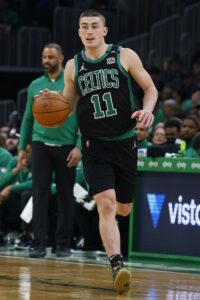
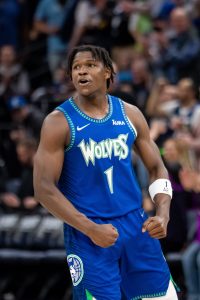
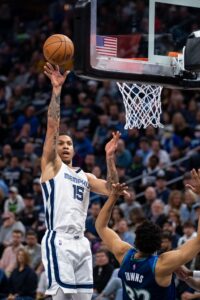 Clarke made an immediate impact in year one, earning a spot on the All-Rookie First Team after averaging 12.1 PPG and 5.9 RPG while shooting 61.8% from the floor and 75.9% from the line in 58 games (22.4 MPG). He even showed the ability to space the floor at times, though on very low volume: he converted 35.9% of his 64 three-point attempts on the season.
Clarke made an immediate impact in year one, earning a spot on the All-Rookie First Team after averaging 12.1 PPG and 5.9 RPG while shooting 61.8% from the floor and 75.9% from the line in 58 games (22.4 MPG). He even showed the ability to space the floor at times, though on very low volume: he converted 35.9% of his 64 three-point attempts on the season.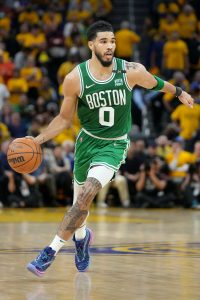 Boston Celtics (55.5 wins):
Boston Celtics (55.5 wins): 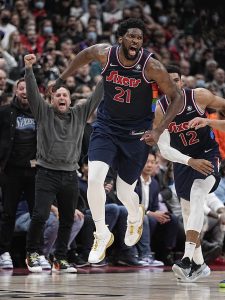 Philadelphia 76ers, 50.5 wins: 76.1%
Philadelphia 76ers, 50.5 wins: 76.1%